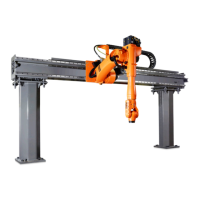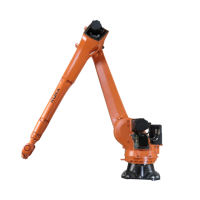29 / 79Issued: 19.12.2012 Version: KST EthernetKRL 2.2 V1 en (PDF)
6 Programming
By setting a flag or an output, it can be indicated that a certain data el-
ement or a complete data record has been received (Set_Flag or
Set_Out element in the XML structure for data reception).
Example: Interrupt of the KRL program by WAIT FOR $FLAG[
x]
(>>> 7.2.5 "XmlCallback configuration example" Page 48)
The EKI_CheckBuffer() function can be used to check cyclically
whether the memory contains new data elements.
6.2.2 Initializing and clearing a connection
Description A connection must be created and initialized with the EKI_Init() function. The
connection configuration specified in the function is read in. A connection can
be created both in the robot interpreter and in the Submit interpreter.
A connection can be deleted again in the robot or Submit interpreter using the
EKI_Clear() function. The deletion of a connection can additionally be linked
to robot interpreter and Submit interpreter actions or system actions. (Config-
urable via the <ENVIRONMENT> element in the connection configuration)
“Program”
configuration
With this configuration, a connection is deleted after the following actions:
Reset program.
Deselect program.
Reconfigure I/Os.
Fig. 6-1: “Program” connection configuration
The driver is reloaded when reconfiguring the I/Os, i.e. all initializa-
tions are deleted.

